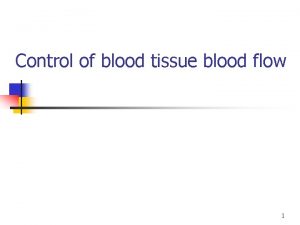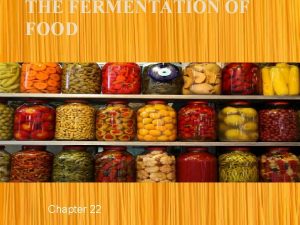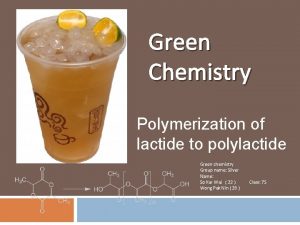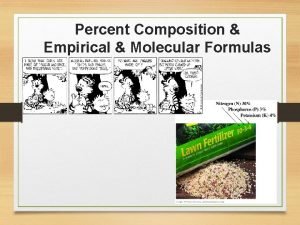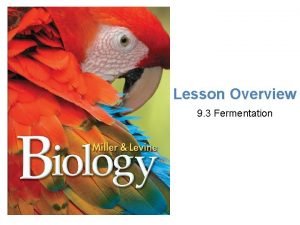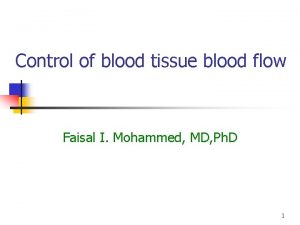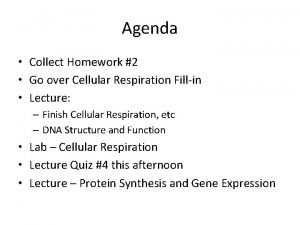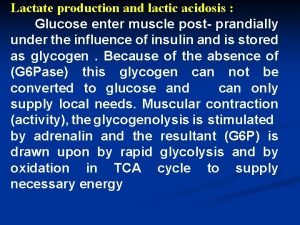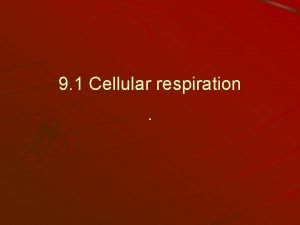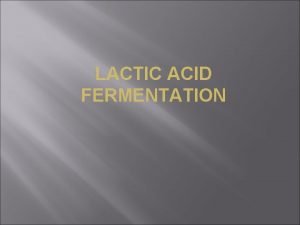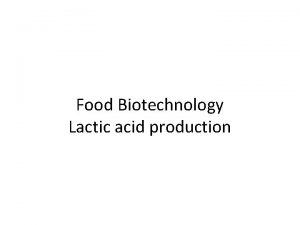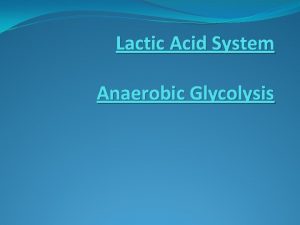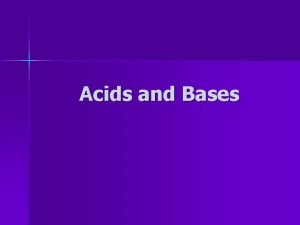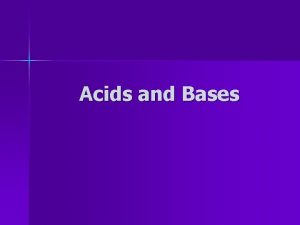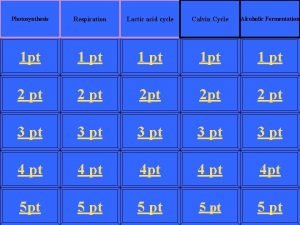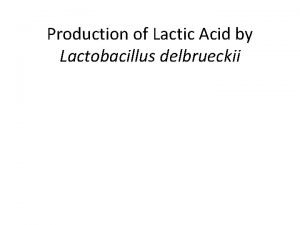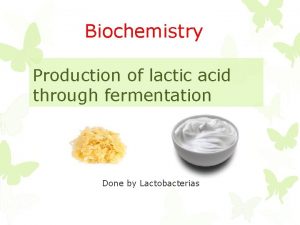Poly Lactic Acid What is PLA PLA Poly












- Slides: 12

Poly Lactic Acid

What is PLA? § PLA – Poly Lactic Acid § Made from Plants, not Petroleum § Starch in the plant is converted by fermentation to Lactic Acid, which is polymerized to make PLA § Can be made from plants containing starches/sugars like corn, sugar beets, sugar cane, wheat etc.

Who Makes It? § § § Nature. Works – biggest PLA producer in the world Owned by Cargill Factory in Blair, NE – 300 million lbs/year Uses Corn Starch to make PLA Other PLA manufacturers in Europe and China.

Corn use in USA § 45% used for livestock, poultry and fish production § 27. 5% for ethanol production § 17. 5% for exports § 10% for human consumption like corn chips, high fructose corn syrup, starch, sweeteners etc.

How Much Corn goes to make PLA? § 2. 2 lbs of corn needed for 1 lb of PLA § Byproducts can be used for producing germ oil, corn gluten meal, etc § US Corn Production – 700 billion lbs § US PLA Production – 300 million lbs § 0. 09% of total US corn production

GMO vs non-GMO § 86% of Corn Grown in USA is GMO § Corn used to make PLA in USA is corn available 30 miles around Blair, NE

Environmental Benefits – Green House Gases § Manufacturing PLA uses 60% less Green House Gases than PET or PS

Environmental Benefits – Fossil Fuel Use § Manufacturing PLA uses 50% less Non-Renewable Energy (fossil fuels) than PET or PS

End of Life Options - Compostability § Is fully Compostable in a Commercial Composting Facility within 90 days § Din Certco (Europe), BPI (USA), Green. PLA (Japan) certifications § Reduces Environmental Pollution § Is not Home Compostable § Is not Soil Degradable § Is not Marine Degradable § Does not degrade in a landfill

End of Life Options - Feedstock Recycling § PLA can be recycled back to Lactic Acid, via a chemical process called hydrolysis § Once converted to Lactic Acid, it can be remade into PLA § Allows infinite recycling of feedstock vs. normal down cycling of oil-based plastics

End of Life Options - Incineration § Several cities use Municipal Waste Incinerators to burn wastes. § No Toxicity when burning PLA, unlike fossil based polymers § Heat Content (8368 Btu/lb) higher than cellulosic materials like Newspaper (8000 Btu/lb), Wood (7300 Btu/lb), Average MSW (5900 Btu/lb)

Thank You!
